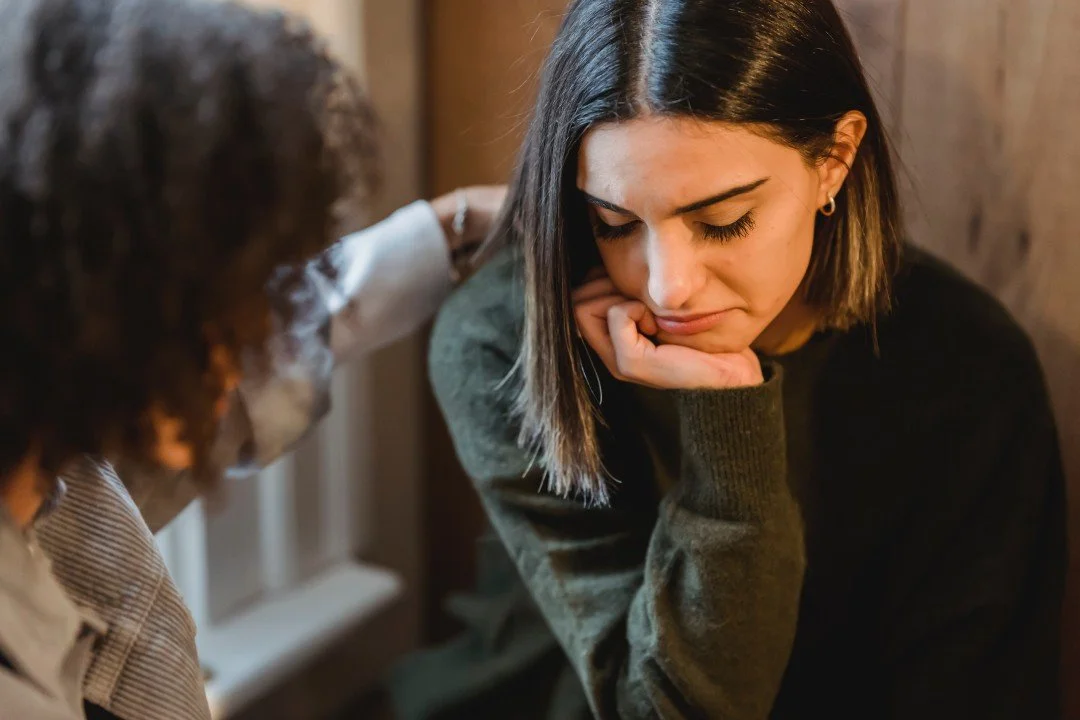It can be difficult to watch someone you care about go through a challenging time. Whether they are struggling with depression and anxiety, grieving the loss of a loved one, or having a rough day, our immediate reaction is to try and alleviate that hurt. We want to show up for the people that we care about and remind them of all the good they have in their life. But it’s time to start unpacking how we process life's harder moments. Think of a time when a friend has opened up to you about a hardship they were experiencing. What was your immediate reaction? Did you tell them not to worry so much? Or remind them to count their blessings, and look for the silver lining? We respond to uncomfortable emotions with positivity as a form of support; we want to make our loved one feel better, and to remind them that things won’t always be this way. But who are we actually helping?
According to research, this type of misdirected positivity can be damaging and can cause additional feelings of stress and isolation. It’s called toxic positivity, and it happens often. We see it on our social media feeds, in our relationships, and in our everyday interactions. In many ways, it’s actually become the normal response to any display of heavy or uncomfortable emotions. We want people to cheer up. We may get awkward because we don’t know how to show up for those who are grieving. We ask how someone is doing, and then immediately follow up with a solution that they did not ask for. We want to skip past the grief, the heaviness, and the difficult conversations, and go back to how things were before. But in doing so, we are erasing moments that define someone’s life. We are asking them to ignore their very real and very raw experiences, because they make us uncomfortable.
Oftentimes when people engage in toxic positivity, they do so because they care and want to be part of the solution. But what if we resisted that temptation? The most powerful action you can take when someone is sharing their hardship with you, could be to take no action at all. Human beings crave belonging. We want to know that there is space for us when we aren’t feeling like ourselves, and that our loved ones want us around even when we aren’t our best. So what should you do, when a friend/peer is sharing their struggles with you? Hold space for it, both my listening to them (not just hearing them) and letting them to feel the way they do.
Some Suggestions:
Listen to understand, rather than listening to respond. It’s not our job to “fix it” or solve the problem and it is likely that the other person does not want us to. When we share our vulnerabilities, we aren’t looking for a solution, we are looking to be heard. The best thing you can do is listen and feel into what’s being shared. By doing so, you’re able to validate feelings.
Avoid inserting yourself in the conversation. We tend to want to relate to people’s experiences by telling them about a situation when we’ve experienced a similar hardship. This shifts the conversation from what they are currently going through, to what you once went through. While it may seem like you are bonding over a shared experience, it decentralizes who the speaker is. Instead, respond by affirming that you’re listening and if the conversation and relationship warrants it, ask how they would like to be supported.
Use informed optimism. Unlike toxic positivity, informed optimism is rooted in reality. With informed optimism, you acknowledge and validate the emotions present, while acknowledging that things can get better. This can be a powerful practice because of the link between emotional acceptance and psychological health.
If you are on the receiving end of toxic positivity, it can be disappointing and isolating. But know that your feelings are valid. It’s okay to not be okay. Our ability to feel is what makes us human, and that includes emotions – which can make some people uneasy. Your job isn’t to minimize your feelings for the comfort of others; it’s to be who you are. As we begin to become more comfortable allowing ourselves to be emotionally present and vulnerable, we will naturally give others permission to do the same. The next time someone you care about is telling you to look on the bright side, tell them how that’s making you feel. We learn in community, and we heal this way too. By teaching others how they can show up for you, you’re indirectly teaching them how they can show up for themselves as well.
The most powerful thing you can do is hold space for the people that you are connected to and be with them in their vulnerability. In a world that prioritizes actions, there is power in being still.

